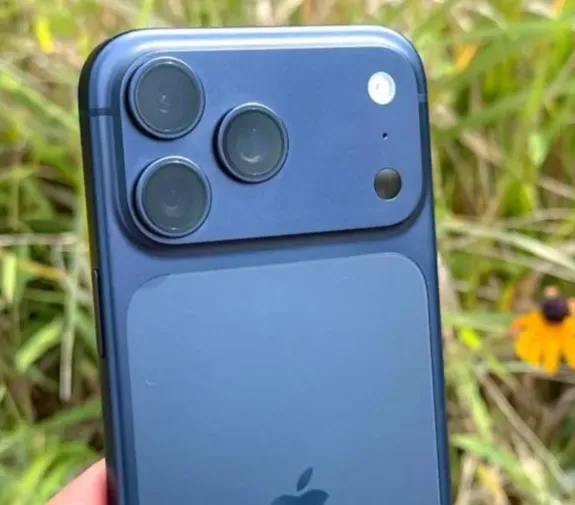The release of the iPhone 17 Pro and Pro Max was meant to highlight Apple’s continued dominance in the premium smartphone market. Instead, the spotlight has shifted to a controversy no one expected: scratches and scuffs showing up on brand-new devices within hours of unboxing. Customers in the United States, China, and Europe have all reported similar problems, and what began as scattered posts has quickly grown into a widespread debate under the nickname “scratchgate.”
At the center of the backlash is Apple’s material decision. In previous generations, the company leaned heavily on titanium for its flagship devices, touting its resilience and resistance to wear. This year, however, Apple opted for aluminum, marketing it as lighter yet equally strong. While the change may have improved the phone’s weight and feel, many owners now claim it has come at the cost of durability. Everyday use — slipping the phone into a pocket, charging it with MagSafe accessories, or brushing against coins and keys — seems to leave visible marks. The Deep Blue finish appears to showcase scratches the most, but owners of the other color options are experiencing similar frustrations.
Tech reviewers and YouTubers have only amplified the discussion. Durability tester JerryRigEverything and others have demonstrated how quickly the iPhone 17 Pro can pick up scratches, particularly around the frame and the triple-camera housing. Although some of these videos are designed to push devices to extremes for entertainment value, they reflect what many real-world users are already noticing with normal use.
Apple, for its part, promoted the iPhone 17 Pro as being just as tough as past models, pointing to aluminum’s structural strength and the benefits of its new “plateau” design. But photos circulating on forums and social platforms suggest otherwise. Alongside hairline scratches, users have shared images of dents, chipped corners, and worn-down edges. Even protective cases don’t seem to solve the problem fully, since parts of the device remain exposed due to the design changes. For a product marketed as a premium investment, this vulnerability has caught many off guard.
The customer response has been swift. Some have canceled pre-orders, while others are reconsidering whether to upgrade at all. The situation is drawing inevitable comparisons to past durability controversies, such as the scuffing problems that plagued the iPhone 5 and the infamous “bendgate” with the iPhone 6. Each of those incidents left a mark on Apple’s reputation, forcing the company to rethink its approach to durability claims. With the iPhone 17 Pro, the risk is similar: if Apple doesn’t act quickly to reassure buyers, the negative narrative could overshadow the phone’s otherwise impressive features.
So far, Apple has not issued an official comment, leaving customers to speculate on whether the problem is a design oversight, a materials issue, or simply the trade-off for pushing the design thinner and lighter. In the absence of clarity, online discussions continue to grow, with some users arguing that Apple should consider reintroducing titanium in future models or at least offer stronger finishes to resist surface damage.
The iPhone 17 Pro was designed to represent Apple’s cutting edge — a blend of power, elegance, and portability. But the ongoing “scratchgate” debate serves as a reminder that even the smallest design choice can have an outsized impact on how customers perceive value. For buyers spending top dollar on a flagship smartphone, aesthetics and longevity matter just as much as performance. If Apple fails to address these concerns, the iPhone 17 Pro may go down in history not only for its technological advances but also for sparking yet another durability controversy in Apple’s long line of premium devices.
